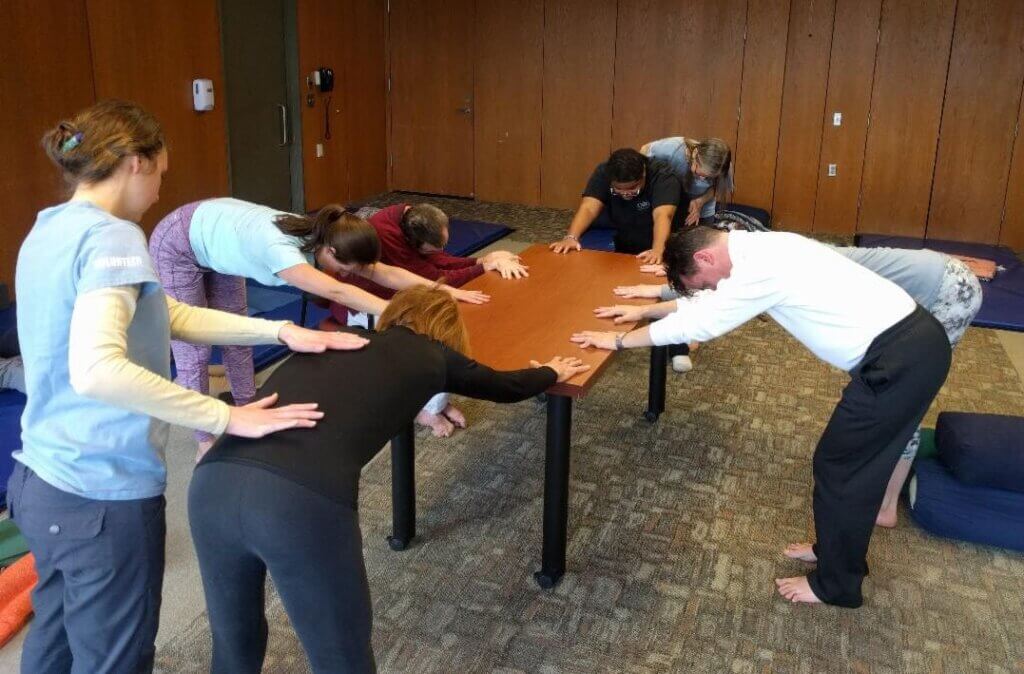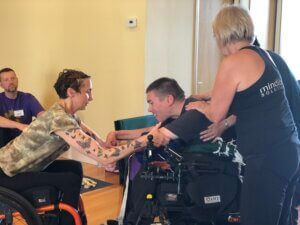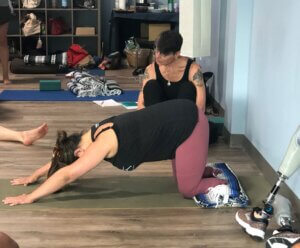Each day circumstances emerge, both heartbreaking and heartwarming, which confirm the impact of our cumulative energies and how tightly connected we are to one another.
At MBS, we are a collection of individuals of myriad shapes, sizes, and backgrounds interwoven by the shared mission of helping ourselves and others find relief and joy in our bodies.
Invite a friend or small group to gather around a secure table or solid flat surface. Although the surface is stationary, notice if one side is too forceful, as it could compromise the other side. Place hands flat on the surface, shoulder-distance apart and with the fingers spread. Focus on the area between thumb and pointer finger. Lengthen the triceps and open the elbow pits. Feel the stability of the upper body. Keep the neck in alignment with the rest of the spine as if there is orange under the chin. Slowly push the hips backward until the body is at an angle, hinging at the waist. Ground through the feet and/or sit bones. Lengthen the spine, lift the chest and broaden across the collar bones. Breathe naturally and stay for a few moments. Slowly and safely come out of the pose by stepping or rolling towards the table. Stand or sit tall and absorb the relief offered by the collective experience
View a 20 minute instructional video on Downward Facing Dog with Matthew Sanford and Lindsay Moorehead here.
- Change relationship to gravity by adjusting the angle of the spine
- Broaden base by changing leg positions
- Open skin of the elbow pit and connect that to the back of the knees
- Stay close to the surface and gently drop the chin and shoulders arching the back like a cat; then lift chin and chest, allowing for a slight back bend.
- With feet/sit bones grounded and stable, lift ONE arm at a time and open to the side as if opening to give someone a hug. Alternate and find your rhythm
- To your ability, slightly bend and straighten the legs and play with slightly internally rotating the femurs
Benefits:
- Broadens base and increases balance and stability
- Allows for space and well-being in the joints
- Encourages clarity along the spine
- Increases awareness, agility, and receptivity of surroundings
- Notice if the interactions reveal sensations of “supporting” or “ being supportive”
- Some things are just better together



